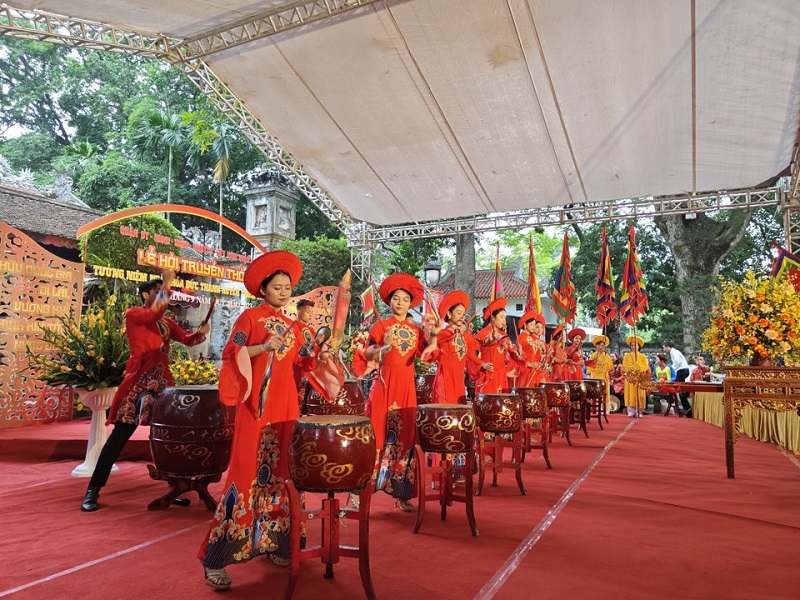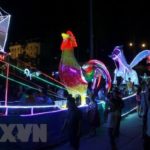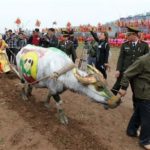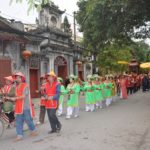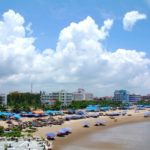Hanoi’s Ba Dinh District is now home to two nationally recognized tourist attractions: Quan Thanh Temple in Quan Thanh Ward and Voi Phuc Temple in Ngoc Khanh Ward. These sites, rich in cultural and spiritual significance, have been officially designated as places of interest for visitors to the city.
| The spiritual ceremony, held at Quan Thanh Temple in October 2023, exemplifies the cultural importance of these sites. |
The Hanoi People’s Committee, in an important decision earlier this month, conferred the titles of national relics upon these two temples. The committee has instructed the Ba Dinh District authorities to collaborate with relevant government agencies to manage and develop these tourist sites effectively. This collaborative effort aims to ensure that Hanoi’s tourism development is both sustainable and aligned with the Law on Tourism and related legal frameworks.
Voi Phuc Temple and Quan Thanh Temple are not just any ordinary temples; they are two of the “Four Guardian Temples of Thang Long.” Constructed during the reign of King Ly Thai Tong (1028-1054), Voi Phuc Temple occupies a significant position in the southwest corner of the ancient Thang Long Citadel, now encompassed by Thu Le Park and the Hanoi Zoo.
Annually, a grand festival is held to honor Linh Lang Dai Vuong, who played a pivotal role in assisting King Ly Thanh Tong in defeating the Chinese Song invaders during the 11th century. This festival, a vibrant celebration of history and culture, takes place over several days, usually commencing on the 9th and 10th of the second lunar month. Elaborate processions and traditional activities are spread across 3 to 10 days, depending on community contributions, making it a dynamic and extended event.
Quan Thanh Temple, on the other hand, was built shortly after King Ly Thai To relocated the capital from Hoa Lu (in what is now Ninh Binh Province) to Thang Long, which is present-day Hanoi. This temple holds a prestigious position on the northeast side of the picturesque West Lake.
The temple’s significance was officially recognized in 1962 when it was designated as a national historical and cultural site. This recognition was further elevated on January 18, 2022, when the Prime Minister declared it a special national relic. Among its prized possessions is a bronze statue of Huyen Thien Tran Vu, crafted by the talented artisans of Ngu Xa Village. This statue, measuring 3.96 meters in height and weighing a substantial four tons, boasts an impressive eight-meter circumference and dates back to 1677.
Twice a year, on the third day of the third lunar month and the ninth day of the ninth lunar month, local communities come together to celebrate festivals in honor of Huyen Thien Tran Vu. This mythical figure is revered for warding off monsters and evil spirits and ensuring favorable weather conditions for agriculture.
In addition to these developments, the Hanoi People’s Committee has also recognized Ngoc Island – Truc Bach in Truc Bach Ward, Ba Dinh District, as a designated tourist destination, now officially named “Ngoc Island – Truc Bach Tourist Site.”
Hanoi’s tourism sector is experiencing a significant surge, with July 2024 welcoming 468,000 visitors, marking a remarkable 175% increase compared to the previous year. This positive trend continues, with the city having received nearly 3.5 million tourists in the first seven months of the year, reflecting a one-third increase year-on-year.
International tourism has also witnessed a notable boost, with the number of international visitors surpassing 2.4 million, representing a 43% increase compared to the same period last year.
Nguyen Manh Quyen, Vice Chairman of the Hanoi People’s Committee, underscores the importance of tourism as a key economic sector for the city. The committee remains committed to fostering investment and protecting and preserving tourist sites and historical relics, thereby enriching and diversifying Hanoi’s attractions for visitors worldwide.

